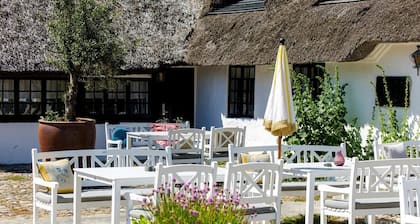If you need to get away from a hectic life, a spa break on Læsø is ideal. After you’ve been pampered in the spa, you’ll be ready to explore the island and its unique cultural history. Start with a visit to Tanghusene – a special collection of buildings with roofs thatched with seaweed instead of straw, which was hard to grow on the island because of the soil.
Læsø is the largest island in the Kattegat, lying about12 miles off the coast of northern Jutland. It occupies a special niche in Nordic mythology as the place where the Aser partied. To learn more about the island’s history, a visit to one of the five sections of the Læsø Museum is recommended.
The vast, protected area called Rønnerne used to be used for salt production because of the natural conditions of the local area. Production stopped many years ago, but has recently been restarted by the Læsø Saltsyderi (Læsø Salt works). Pop in to learn all about salt making, try a few freebies and buy some of the delicate handmade salt on offer.
A ride in a horse-drawn carriage or the tractor-pulled Rønnerbus along the natural causeway to Hornfiskrøn has become a popular way to reach the little island south of Læsø. You can also get there yourself by bike or on horseback, but make sure you do so when it’s safe, in particular when the tide’s out. Enjoy the varied wildlife by taking a boat out to the Borfeld reef, where you can get up close to the adorable seals.
To get to Læsø, take the ferry from Frederikshavn, a town you can easily reach by road or bus. There are also good rail services to Frederikshavn. If you are coming from Zealand, you can get a taxi flight from Roskilde Airport to the little Læsø airstrip.
Many visitors take a weekend holiday in Læsø to see the rare birdlife here, which include sea terns and turnstones. Læsø is also popular with anglers, and lobsters are particularly easy to catch here.





